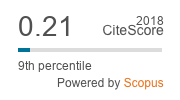Taxa de Resposta em Levantamento de Dados pelo Correio:
O Efeito de Quatro Variáveis
Mots-clés :
Técnicas, Questionário, CorreioRésumé
RESUMO - O objetivo deste estudo foi avaliar a adequação da técnica de levantamento de dados pelo correio para coletar informações no Brasil. A pesquisa foi realizada em Brasília. Com uma amostra randômica de 480 endereços foi estudado o efeito de quatro variáveis sobre a taxa de resposta: (1) contato adicional com o respondente, (2) tipo de envelope, (3) conteúdo da carta introdutória e (4) saliência do assunto da pesquisa. A taxa de resposta geral foi de 21,5%, aumentando para 30% quando os respondentes foram contactados por telefone, ou antes ou depois de ter recebido o questionário pelo correio. As demais variáveis não tiveram influência significativa sobre a taxa de resposta, nem foi observada interação entre as variáveis. Concluiu-se que a técnica de levantamento de dados pelo correio pode ser adequada na população estudada; entretanto, sugerem-se estudos adicionais para verificar que outros fatores contribuem para um aumento da taxa de resposta no meio brasileiro.
Téléchargements
Références
Public Opinion Quarterly, 54, 233-248.
Brunner, G.A. & Carroll, S.J., Jr. (1969). The effect of prior
notification on refusal rate in fixed address surveys. Journal of
Advertising Research, 9, 42-44.
Childers, T.L. & Ferrell, O.C. (1979). Response rates and perceived
questionnaire length in mail surveys. Journal of Marketing
Research, 16, 429-431.
Eichner, K. & Habermehl, W. (1981). Predicting response rates to
mailed questionnaires. American Sociological Review, 46,36]-
363.
Fidell, S. (1978). Nationwide urban noise survey. The Journal of
the Acoustical Society of American, 64, 198-206.
Fitzgerald, R. & Fuller, L. (1982). The effects of reluetant and
refusers on sample survey estimates. Sociological Methods &
Research, 11, 3-32.
Fox, R.J., Crask, M.R. & Kim, J. (1988). Mail survey response rate:
A meta-analysis of selected techniques for inducing response.
Public Opinion Quarterly, 52, 467-491.
Frankel, M.R. & Frankel, L.R. (1987). Fifty years of survey sampling
in the United States. Public Opinion Quarterly, 51, 127-
138.
Goodstadt, M.S., Chung, L., Kronitz, R. & Cook, G. (1977). Mail
survey response rates: Their manipulation and impact. Journal
of Marketing Research, 14, 391-395.
Goyder, J. (1985). Face-to-face interviews and mailed questionnaires:
The net difference in response rate. Public Opinion
Quarterly, 49, 234-252.
Günther, H. & Lopes Jr., J. (1990). Perguntas abertas versus perguntas
fechadas: uma comparação empírica. Psicologia: Teoria
e Pesquisa, 6, 203-213.
Herberlein, T.A. & Baumgartner, R. (1978). Factors affecting
response rates to mailed questionnaires: A quantitative analysis
of the published literature. American Sociological Review, 43,
447-462.
Herzog, A.R. & Bachman, J.G. (1981). Effects of questionnaire
length on response quality. Public Opinion Quarterly, 45,
549-559.
Houston, M.J. & Nevin, J.R. (1977). The effects of source and
appeal on mail survey response patterns. Journal of Marketing
Research, 14, 374-378.
Jeanne, E. & GuUahorn, J.T. (1963). An investigation of the effects
of three factors on response to mail questionnaires. Public
Opinion Quarterly, 27, 294-296.
Job, R.F.S. & Bullen, R.B. (1987). The effects of face-to-face
interview versus a group administred questionnaire in determining
reaction to noise in the workplace. Journal ofSound and
Vibration, 776,161-168.
Jussaume, R.A. & Yamada, Y. (1990). A comparison of the viability
of mail surveys in Japan and the United States. Public
Opinion Quarterly, 54, 229-247.
Kaplowitz, S.A. & Shlapentokh, V. (1982). Possible falsification
of survey data: Analysis of a mail survey in the Soviet Union.
Public Opinion Quarterly, 46, 1-23.
Knobe, D. & Burke, R.B. (1983). Log-linear models. London: Sage
Publications.
Martin, J.D. & McConnell, J.P. (1970). Mail questionnaire response
induction: The effect of four variables on response of a random
sample to a difficult questionnaire. Social Science Quarterly,
57,409-414.
Mizes, J.S., Fleece, E.L. & Ross, C. (1984). Incentives for increasing
return rates: Magnitude leveis, response bias, and format.
Public Opinion Quarterly, 48, 794-800.
Nederhof, A.J. (1983). The effects of material incentives in mail
surveys: Two studies. Public Opinion Quarterly, 47, 103-11.
Norusis, M.J. (1990). SPSS/PC+ version-4.0: Advanced statistics.
Chicago: SPSS Inc.
Plog, S.C. (1963). Explanations for a high return rate on mail
questionnaire. Public Opinion Quarterly, 27, 297-298.
Rodrigues, A., Lobel, S.A., Jablonski, B., Monnerat, M., Corga, D.,
Diamico, K., Pereira, M. & Ferraz, A. (1988). A imagem do
político brasileiro. Psicologia: Teoria e Pesquisa,4,2-\\.
Roeher, G.A. (1963). Effective techniques in increasing response
to mailed questionnaires. Public Opinion Quarterly, 27, 299-
302.
Rucker, M., Hughes, R., Thompson, R., Harrison, A. & Vanderlip,
N. (1984). Personalization of mail surveys: Too much of a good
thing? Educational and Psychological Measurement, 44, 893-
905.
Schuman, H. & Kalton, G. (1985). Survey methods. Em G. A.
Lindzey & E. Aronson (Orgs.). Handbook of social psychology
(pp. 635-697). New York: Random House.
Schuman, H., Presser, S. & Ludwig, J. (1981). Context effects of
survey responses to questions about abortion. Public Opinion
Quarterly, 45, 216-223.
Siemiatycki, J. (1979). A comparison of mail, telephone, and interview
strategies for household health surveys. American Journal
of Public Health, 69, 238-245.
Solórzano, I. (1991). Padrões de respostas e taxas de participação
em levantamento de campo: aplicação ao problema do ruído
urbano. Dissertação de Mestrado. Brasília: Instituto de Psicologia,
UnB.
Sommer, R. & Sommer, B.B. (1991). A practical guide to behavioral
research: Tools and techniques. New York: Oxford University
Press.
Tedin, K.L. & Hofstetter, C.R. (1982). The effect of cost and
importance factors on the return rate for single and multiple
mailings. Public Opinion Quarterly, 46, 122-128.
Walker,B.J. &Burdick,R.K. (1977). Advance correspondence and
error in mail surveys. Journal of Marketing Research, 14,
379-382.
Weinstein, N.D. (1980). Individual differences in criticai tendencies
and noise annoyance. Journal ofSound and Vibration, 68,
241-248.
Williams, B.J., Weeks, M.F. & Bryan, F.A. (1984). Effects of an
advance telephone call in a personal interview survey. Public
Opinion Quarterly, 48, 650-657.



